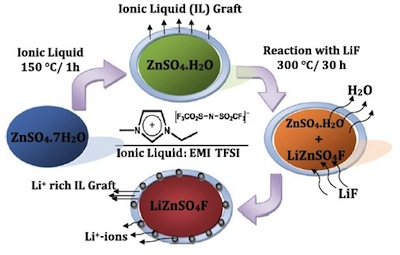Ask for a reprint
email :
* Give your email
2012
ACL
|
P.Barpanda, R.Dedryvere, M.Deschamps, C.Delacourt, M.Reynaud, A.Yamada, J.M.Tarascon, 'Enabling the Li-ion Conductivity of Li-metal Fluorosulphates by Ionic Liquid Grafting', J. Solid State Electrochem. 16 1743-1751 (2012) doi:10.1007/s10008-011-1598-y
Recently unveiled 'Alkali metal fluorosulphate (AMSO4F)' class of compounds offers promising electrochemical and transport properties. Registering conductivity value as high as 10-7 S.cm-1 in NaMSO4F phases, we explored the fluorosulphate group to design novel compounds with high Li-ion conductivity, suitable for solid-electrolyte applications. In the process, we produced sillimanite-structured LiZnSO4F by low-temperature synthesis (T<300°C). Examining this phase, we accidentally discovered the possibility of improving the ionic conductivity of poor conductors by forming a monolayer of ionic liquid at their particle surface. This phenomenon was studied by solid-state NMR, XPS and AC impedance spectroscopy techniques. Further, similar trends were noticed in other fluorosulphate materials like tavorite LiCoSO4F and triplite LiMnSO4F. With this study, we propose 'ionic liquid grafting' as an interfacial route to enable good Li-ion conductivity in otherwise poor conducting ceramics.
|

|